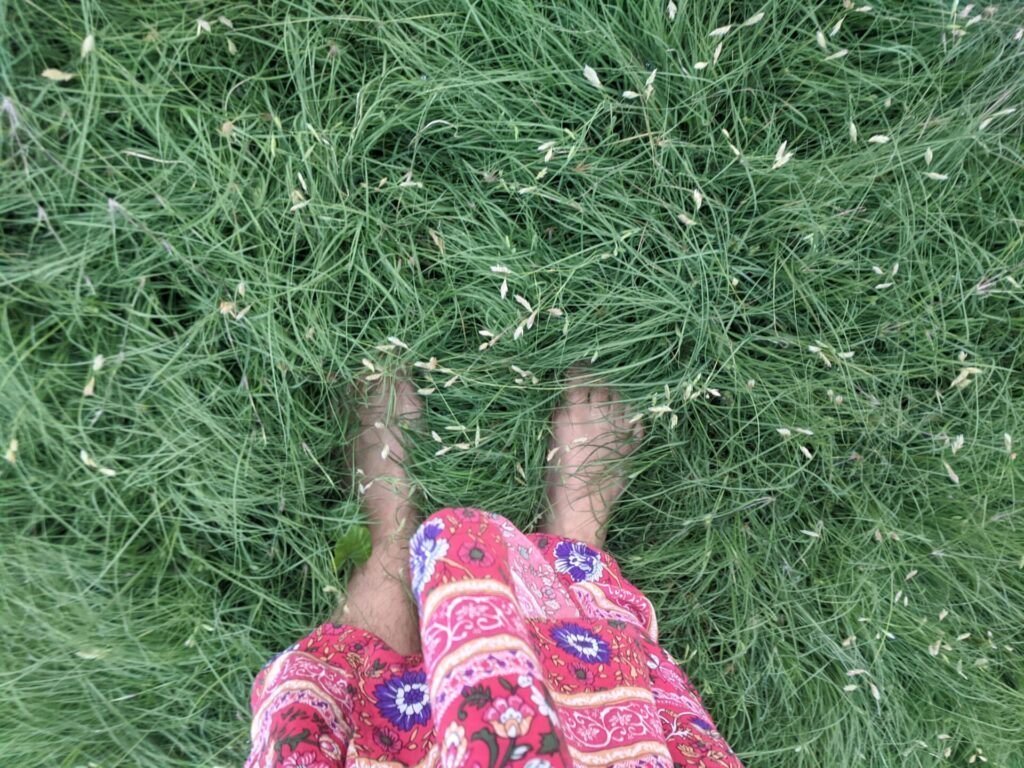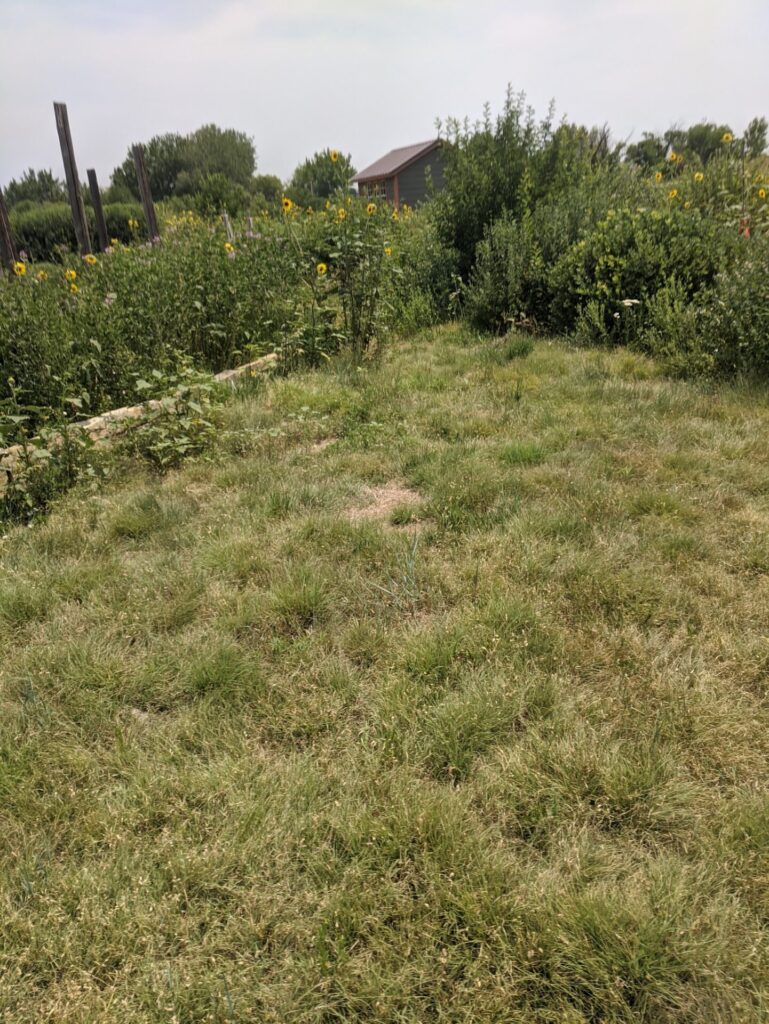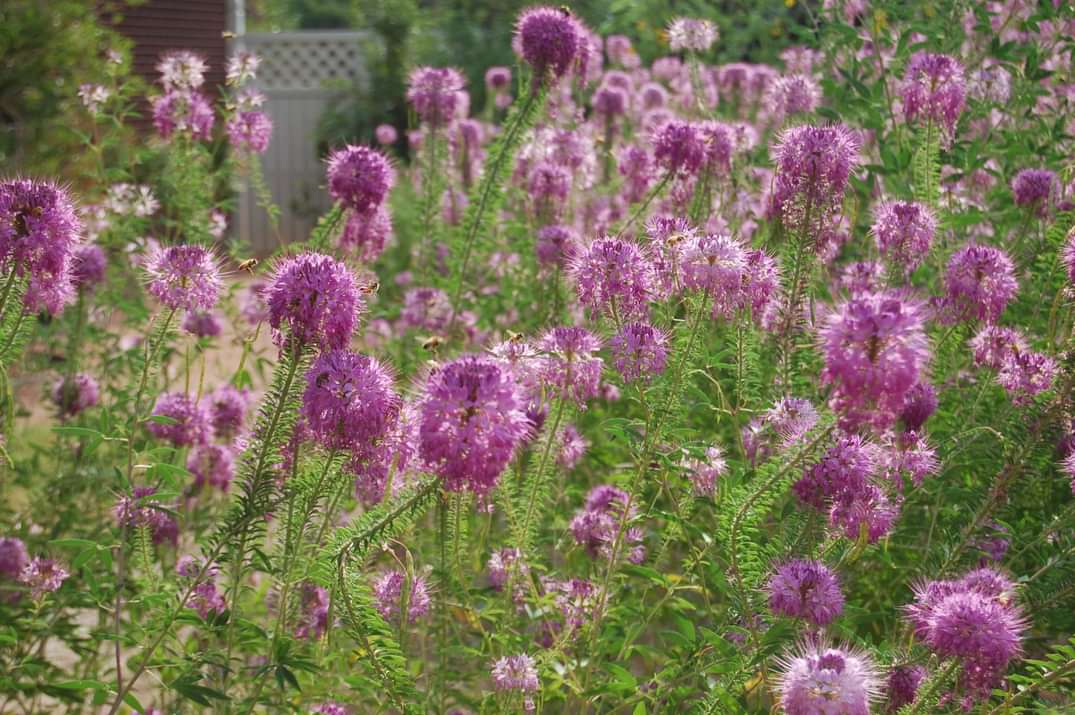
Kentucky Bluegrass, the most common lawn grass in America, is our nation’s #1 crop. But it isn’t from Kentucky. Like most of our landscaping plants, it’s from Eurasia, so it’s not adapted to our semi-arid Colorado climate. It takes constant water, fertilizer, herbicides, and mowing to upkeep a bluegrass lawn. Xeric grass alternatives, which require little or no irrigation or fertilization once established, include:
-
- Our native Buffalo Grass, which was a keystone plant in this area before colonization. It’s a tough warm-season grass that naturally forms short sod, and thus doesn’t require mowing or long-term irrigation. “Warm-season” means that it’s greenest when it’s warm, and is dormant (turns brown) from late fall to early spring.
- Blue Grama, the #1 warm-season grass in the Denver plains area for supporting local pollinators. It’s a little taller than buffalo grass, so most people mow it if they are using it as turf. It makes an exceptional low-water turf grass when mixed with buffalo grass.
- Dog Tuff grass, a warm-season buffalo grass from Africa that stands up well to heavy kids’ play and dog urine. It’s also naturally short enough that you can skip mowing.
- Prairie Junegrass, a low-mow grass that is cool-season (stays green all year long like bluegrass) and mildly shade-tolerant.
- Sandberg Bluegrass, a native low-growing grass that is adapted to moderate shade.
- Sheep fescue, a cool-season non-native grass that, like buffalo grass, is short enough that you never have to mow it.
- Western and streambank wheatgrass, spreading native grasses that can be overseeded into drought-stricken bluegrass lawns.




Here at RLD, we have installed all the grass species above and more. We especially love buffalo grass lawns, which can be seeded or planted from plugs. Seeded buffalo grass tends to be taller and has seed heads, as you can see in the first photo on this page; buffalo grass grown from plugs is shorter and doesn’t have seed heads. Either variety spreads fairly quickly to fill in the space, because buffalo grass spreads with runners, like strawberries do.

